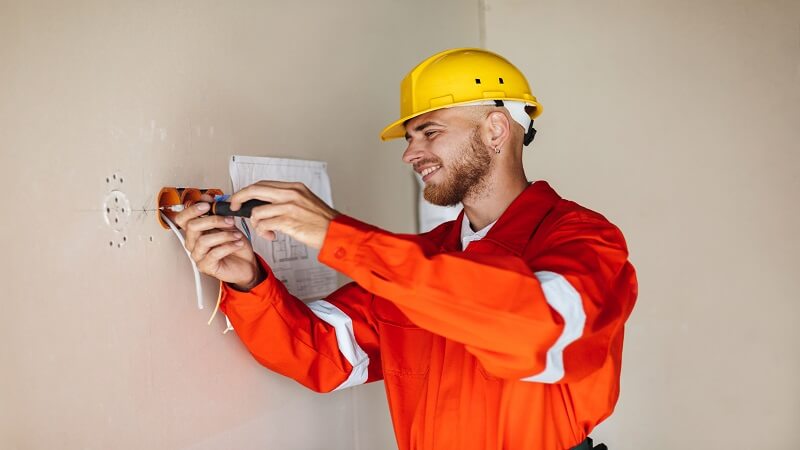Electrical insulation plays a critical role in ensuring the safety and reliability of electrical systems. Over time, insulation materials degrade due to factors like aging, moisture, chemical exposure, and mechanical stress. If left unchecked, deteriorating insulation can result in equipment failure, power outages, and safety hazards. To prevent these issues, regular monitoring and early detection of insulation breakdown are essential. Techniques such as Partial Discharge Testing are widely used to identify defects before they escalate into major problems. Here are some key methods for detecting electrical insulation deterioration and ensuring system reliability.
1. Partial Discharge Testing
One of the most effective methods for identifying early-stage insulation damage is Partial Discharge Testing. Partial discharges occur when small electrical discharges develop within or around insulation materials due to voids, cracks, or contaminants. Although these discharges may not immediately cause a complete system breakdown, they can gradually erode the insulation, leading to catastrophic failure over time.
How It Works:
- Specialized testing equipment detects and measures partial discharges without the need to take equipment offline.
- The location and severity of the discharges can be identified, allowing targeted repairs or maintenance.
- By addressing issues early, companies can avoid costly unplanned downtime and improve the longevity of their assets.
This testing method is commonly used in high-voltage equipment such as transformers, switchgear, and power cables, where insulation integrity is critical.
2. Infrared Thermography
Infrared thermography is a non-invasive technique that detects heat patterns in electrical equipment. When insulation deteriorates, electrical resistance increases, leading to hotspots that can be captured by infrared cameras.
Benefits of Infrared Thermography:
- Early detection of overheating caused by degraded insulation or loose connections
- Real-time monitoring without disrupting operations
- Ability to inspect hard-to-reach areas and large systems efficiently
By identifying abnormal heat buildup, maintenance teams can address insulation issues before they result in component failure or fire hazards.
3. Insulation Resistance Testing
Insulation resistance testing involves applying a voltage to the insulation and measuring the resulting resistance. A high resistance value indicates good insulation, while a drop in resistance may signal degradation due to moisture, contamination, or aging.
Common Applications:
- Routine maintenance of motors, generators, and transformers
- Verification of insulation quality after installation or repairs
- Comparison of resistance values over time to detect trends and predict future failures
Regular insulation resistance tests are essential for tracking gradual insulation wear and scheduling proactive maintenance.
4. Dielectric Loss (Tan Delta) Testing
Dielectric loss testing, also known as tan delta testing, measures the amount of energy lost as heat due to insulation imperfections. As insulation degrades, energy losses increase, making this test an effective tool for identifying aging or moisture intrusion.
Key Advantages:
- Sensitive to both surface and internal defects
- Provides quantitative data on insulation health
- Useful for medium- and high-voltage equipment, including cables and switchgear
Tan delta testing is especially valuable when combined with other diagnostic methods, providing a comprehensive assessment of insulation condition.
5. Visual Inspections and Physical Assessments
While advanced diagnostic methods are essential, regular visual inspections should not be overlooked. Technicians can identify obvious signs of insulation deterioration, such as cracking, discoloration, swelling, or moisture buildup.
What to Look For:
- Physical damage due to mechanical stress or environmental factors
- Evidence of tracking, arcing, or burn marks
- Signs of moisture infiltration, which can accelerate insulation breakdown
Although visual inspections alone cannot detect hidden defects, they serve as a valuable first line of defense when combined with more sophisticated testing methods.
6. Acoustic Emission Testing
Acoustic emission testing detects high-frequency sound waves generated by internal insulation defects. When insulation begins to break down, the resulting electrical discharges produce sound signals that can be picked up by specialized sensors.
Applications of Acoustic Emission Testing:
- Detecting cracks, voids, or partial discharges within insulation
- Non-intrusive testing that doesn’t require system shutdowns
- Useful for equipment under high stress or exposed to harsh environments
Acoustic testing complements other diagnostic techniques by offering additional insights into hidden defects that might not be visible through thermal or resistance testing.
Combining Methods for Comprehensive Monitoring
No single test provides a complete picture of insulation health, so it’s often best to use a combination of techniques. For example, combining partial discharge testing with infrared thermography and insulation resistance tests allows for a thorough evaluation of both surface and internal defects. Implementing a comprehensive monitoring plan helps detect issues early, reduces maintenance costs, and enhances the overall reliability of electrical networks.
With regular monitoring and proactive maintenance, businesses can minimize downtime, extend equipment lifespan, and ensure the safety of their operations. By adopting innovative methods, companies can stay ahead of potential failures and protect their critical infrastructure.
